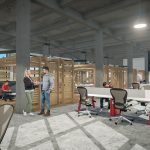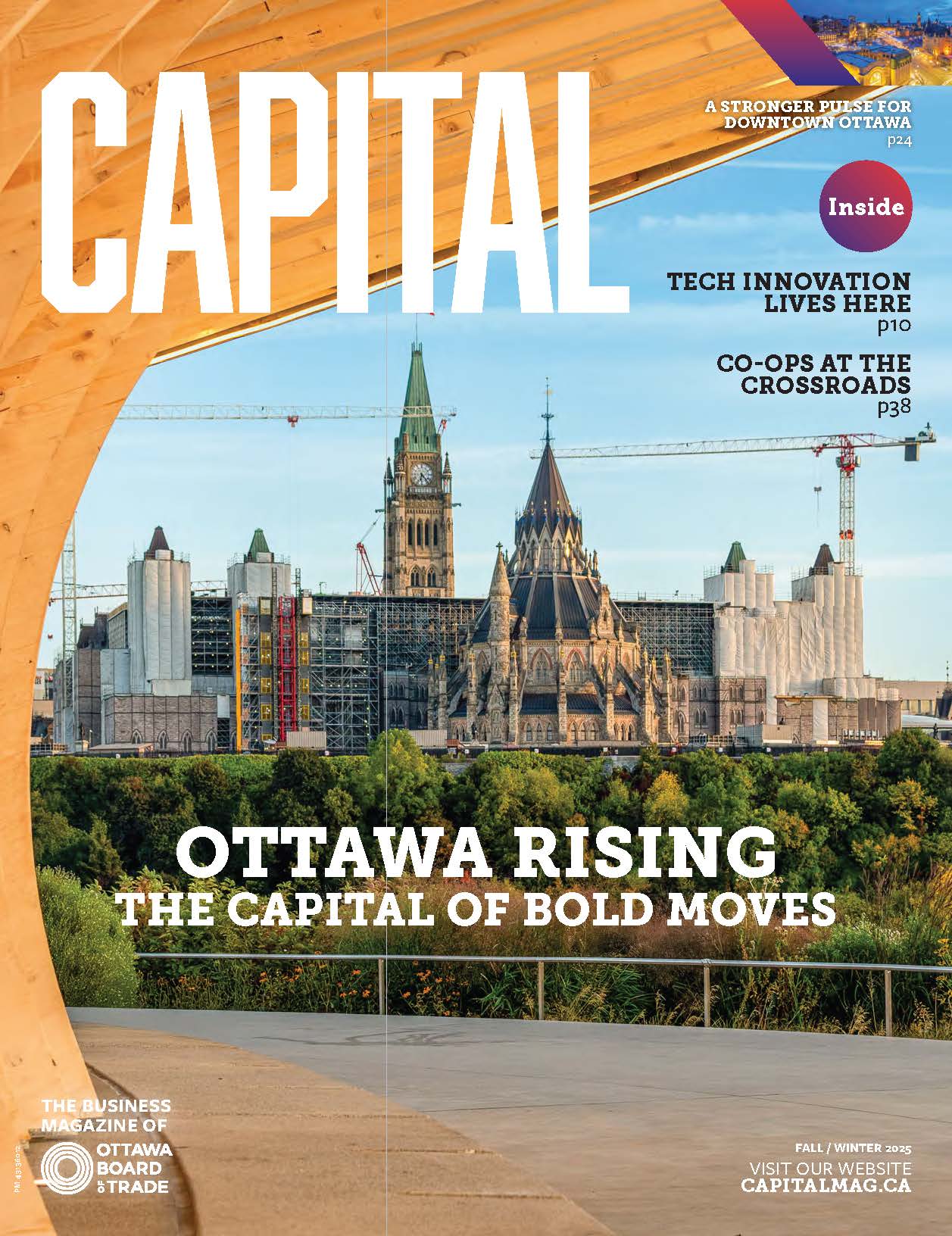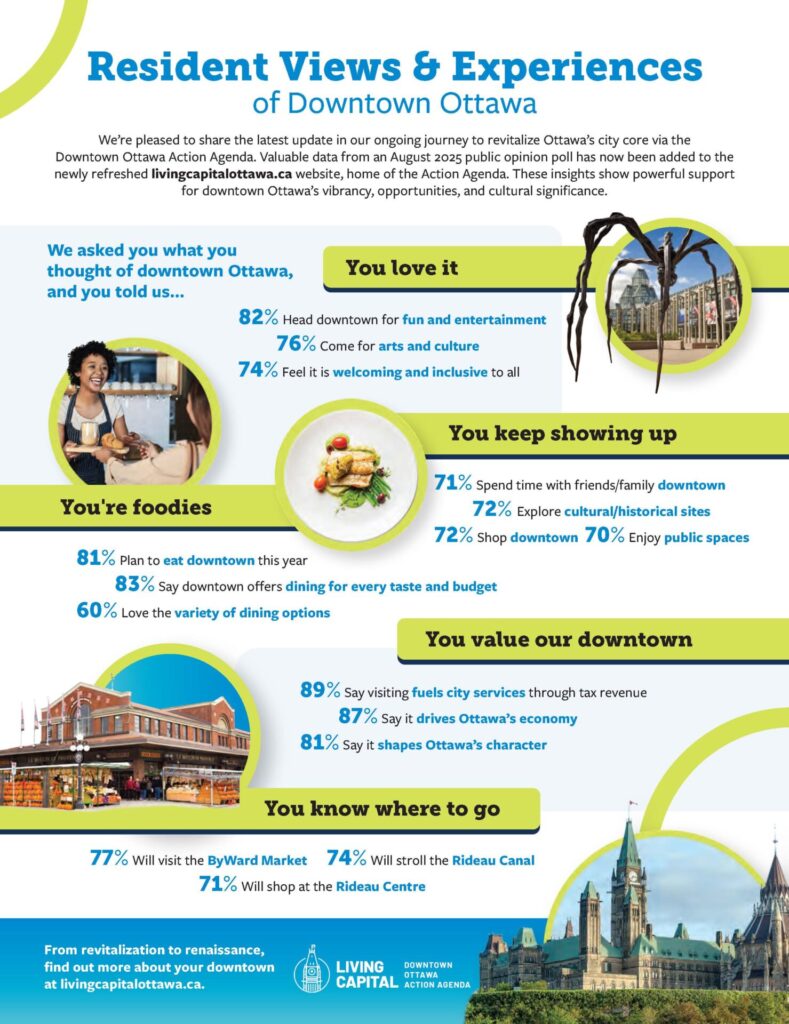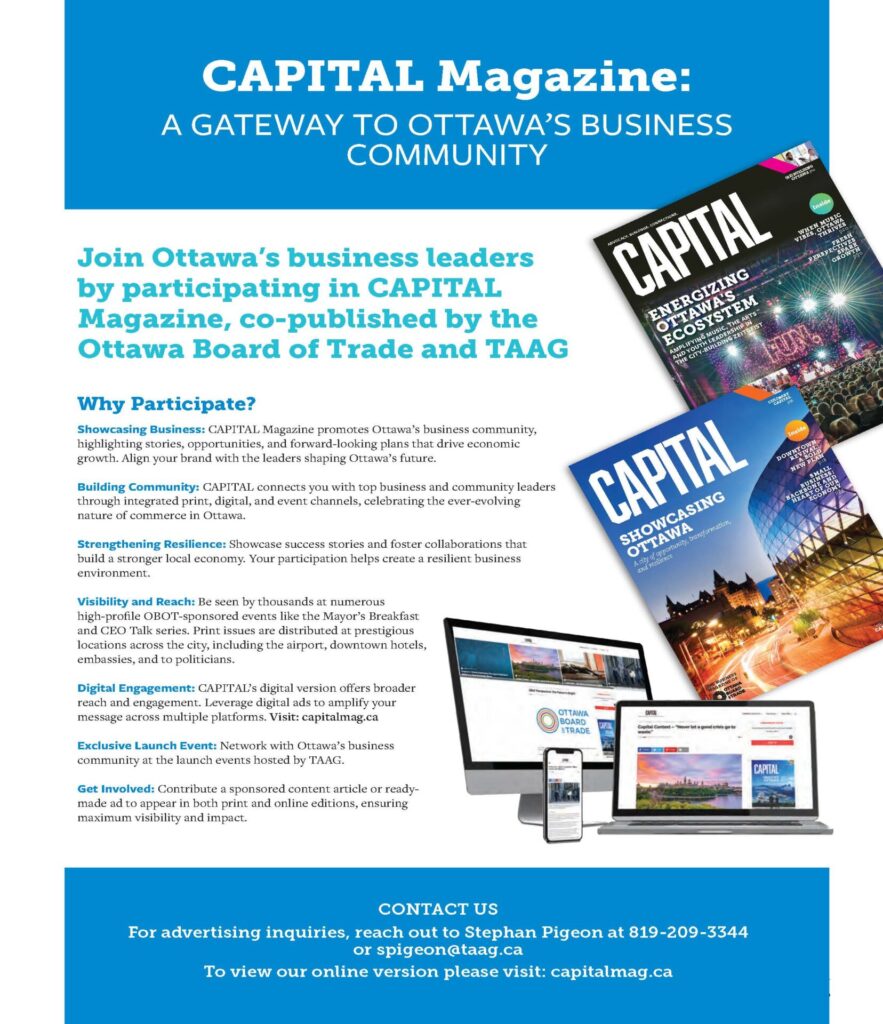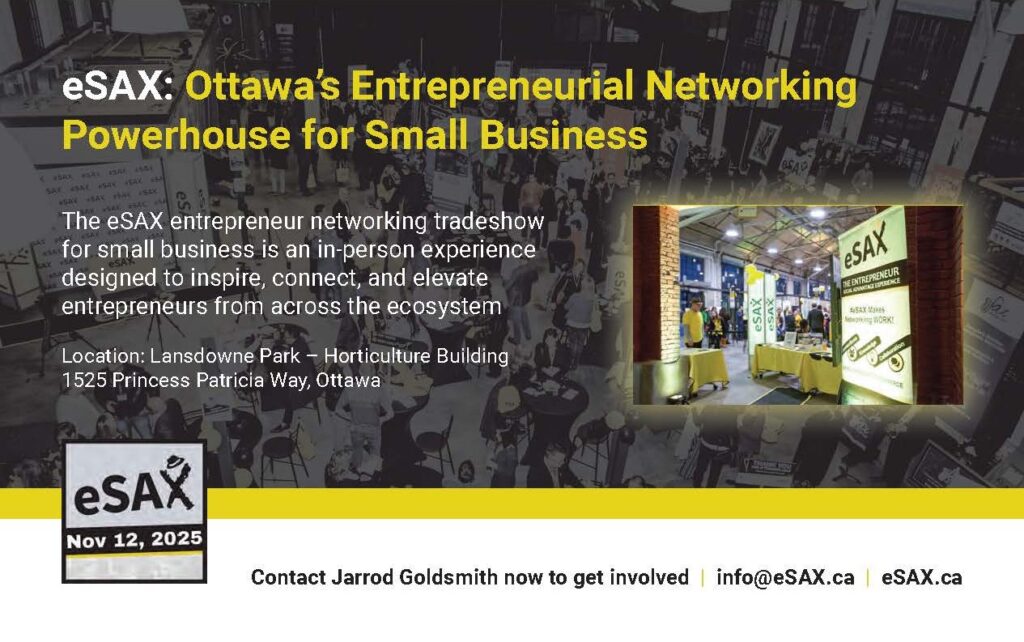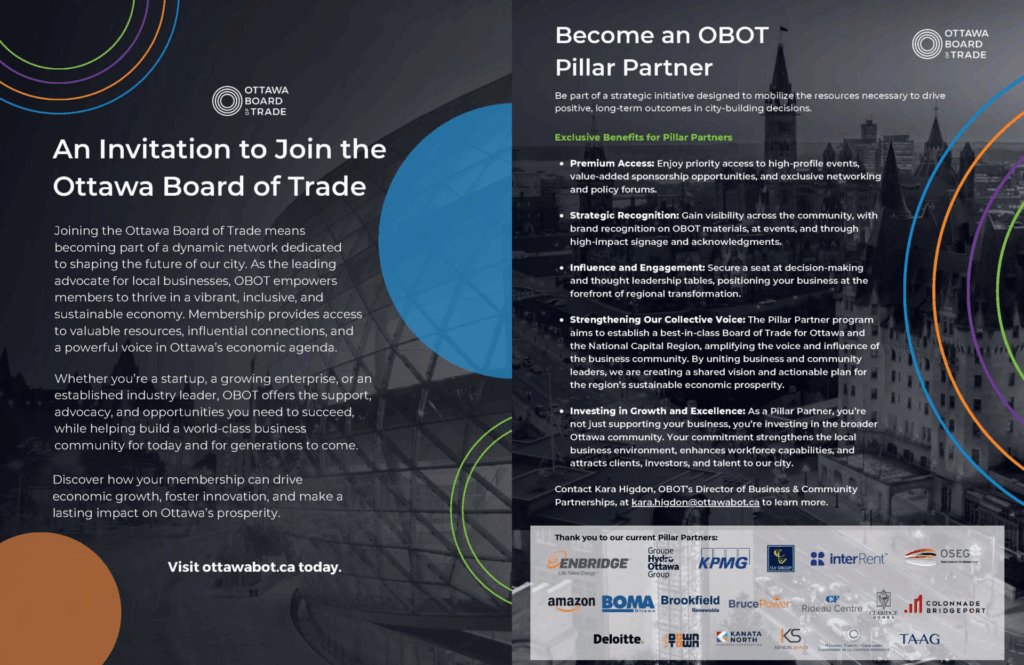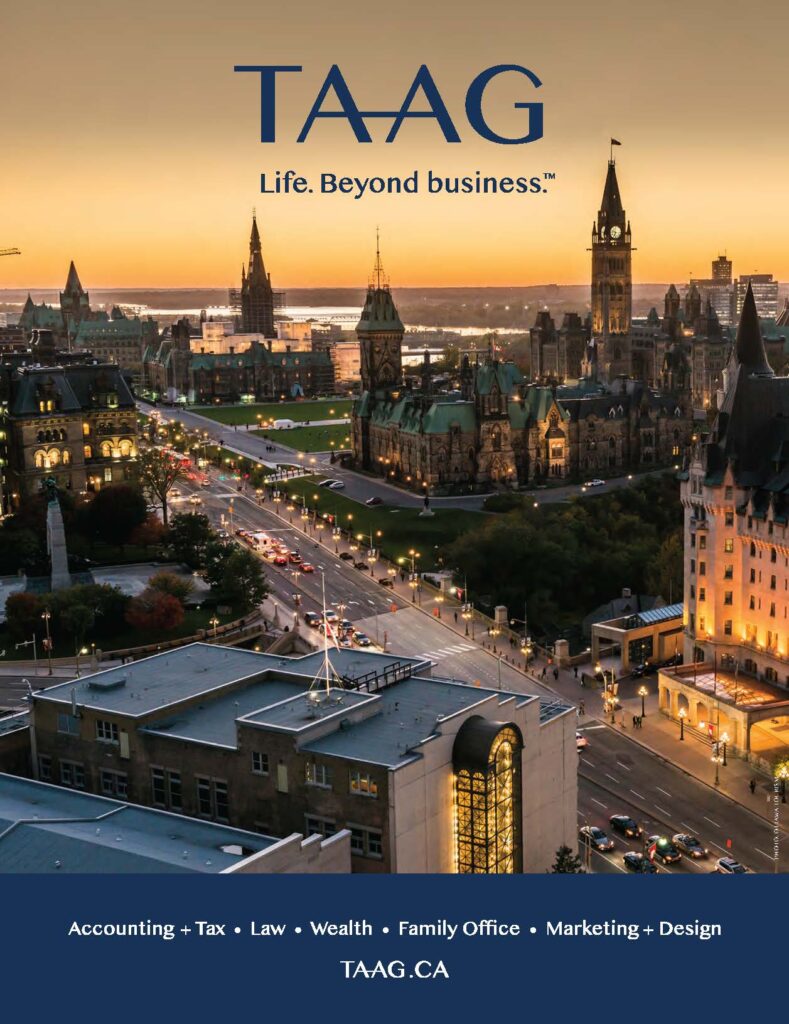Capital Context: Quiet Momentum Drives Tech Refresh
Ottawa is seeing a steady and relentless build-up of momentum in the technology sector
by Tamara Micner
The city of Ottawa is re-emerging as a leader in innovation, but you could be forgiven for not noticing. The renaissance has been quiet and steady, with just a few high profile success stories making headlines. But the march forward has been very deliberate, and it’s nowhere near finished.
Last year, Invest Ottawa declared that it wants Ottawa to be the most innovative city in Canada by 2018. Prime Minister Justin Trudeau and Ontario Premier Kathleen Wynne have both signalled that supporting the innovation economy is critical for Canada’s success. As the second largest economy in Ontario, and with a tech sector on the rebound, Ottawa is primed to grow.
Getting here was far from inevitable. Just five years ago, observers still said that Ottawa’s best tech days were behind us. Having weathered the end of Nortel, the tech bust of the early 2000s and the 2008 recession, you can hardly blame them.
But when e-commerce trendsetter Shopify issued its initial public offering in 2015, it put Ottawa back on the high-tech map. Al Hawtin, former Vice President of Marketing and Business Development at Elliptic Technologies—an Ottawa telecom company that was recently acquired by California-based Synopsys Inc.—is optimistic about what he sees.
“There are definitely some encouraging signs,” he says. “The Shopify IPO was a breath of fresh air for the area.”
In fact, the success stories have been quietly building for several years. Business veterans like Richard Quigley, managing director of the new Innovation Centre at Bayview Yards that’s scheduled to open in late 2016, have seen the tech refresh coming.
“In the last 10 years there’s been a steady and relentless buildup of momentum in the innovative sector for companies developing new and creative things,” he observes. “Shopify deserves everything we say about them, but there are other companies that are world-class as well. There are sectors in Ottawa that have great strength that aren’t broadcast enough.”
Some companies have made the front business pages. Chinese technology giant Huawei, an information and communications technology provider, opened a research and development facility in Ottawa in 2010. In March 2016, it signed a landmark agreement with the Ontario government to expand its workforce and accelerate plans to explore 5G technologies. Kinaxis, which has built an international reputation for its supply chain management software, launched its IPO in 2014 and sold more than $100 million in stock. Their success followed on the heels of Halogen, a talent management software company that raised $55 million with its IPO in 2013. Notably, Google Canada has a presence in Ottawa to complement its Toronto-based Canadian headquarters. But there are more than just a handful of big wins.
Patrick White, acting managing director of L-SPARK, sees a number of factors converging.
“We’re seeing a lot more new players,” White says. “I think we’re also attracting a lot of great companies from outside. When I see that Qlik moved in here, or that Apple is in the area, I think people are recognizing that the talent here is exceptional.”
L-SPARK is a business incubator and accelerator that focuses on the enterprise Software as a Service (SaaS) sector, building on Ottawa’s strong history in that area.
“Ottawa is the SaaS capital,” White says, citing Kinaxis, Shopify and Klipfolio as examples of companies that have built thriving SaaS businesses. “There’s so much happening and so much subject matter expertise, and even cloud infrastructure. It’s incredible what we have here.”
One of Ottawa’s major advantages is the highly skilled workforce across sectors, beyond the expertise on which the telecom companies built their reputation. That is where the city stands ready to leap ahead at the Innovation Centre at Bayview Yards.
The Innovation Centre—a 55,000 square foot heritage building with gold-level LEED certification, a hidden orchard, solar-covered roof, and smart automation system—was developed to support industries where Ottawa has unsung expertise, namely clean tech, prototyping, cyber-security, digital media and advanced manufacturing.
“We’ve identified those as areas where Ottawa has great strengths and advantages that we’d like to broadcast to the world,” Quigley says.
The Centre’s flagship tenant is Invest Ottawa, with additional space for the Carleton Entrepreneurs Accelerator as well as municipal, provincial and federal service providers who work with the startup and tech sectors. Inspired by Waterloo’s Communitech and Ryerson’s DMZ, the Innovation Centre at Bayview Yards also has space available for corporate tenants that would benefit from developing a project in the space. Quigley hopes that bringing together innovators, service providers and community events under one roof will allow the Centre to bolster Ottawa’s innovation ecosystem.
“If we can take the momentum that’s been happening over the last 10 years, and focus and broadcast and build on it, I think it’s going to create a momentum for Ottawa that will build on its own,” he says.
It’s not yet clear to everyone whether that will be enough to rekindle the kind of glory that Ottawa’s tech sector enjoyed in the past. Roy Sunstrum, Vice President of merchant support at Shopify, says the city needs a critical mass to build on its recent success.
“I think one challenge is that we don’t have that critical mass of companies that you can find in Boston or Silicon Valley to attract people to come to those places,” Sunstrum says. But he cautions that the critical mass has to grow organically. “There’s no magic wand we can wave.”
Nevertheless, he cites Shopify’s “spinoff” potential as an encouraging sign.
“One of the things I’ve seen over the years is that when there’s a very strong company, it’ll actually spawn all kinds of other things,” Sunstrum continues. “They’ll rarely be direct spinoffs, but strong people will leave and we will have clusters.” He cites Nortel, DNA Genotek and Spartan Bioscience as other innovative companies that have already done that to varying degrees. However, Sunstrum also noted that he wants Canadian companies to stay Canadian, rather than being acquired by U.S. parents.
Hawtin says the city also needs more venture capital, which has yet to recover since 2000. Compared to institutional investors, he says, “venture money is impatient and in a hurry, which puts a lot of stress on founders—but without that stress, you may not move as quickly.” He believes additional IPOs or acquisitions would help grow the investment pool.
“To some extent, there’s a big, black hole in California that sucks up venture money,” Hawtin adds. “It’s very hard for Ottawa to compete.”
Just because it’s hard doesn’t mean it’s impossible. There is compelling evidence that Ottawa is holding its own on the North American stage against big U.S. cities. In FDi’s Cities of the Future report for 2015-16, Ottawa ranked second for economic potential in the list of top 10 mid-sized American cities of the future, surpassed only by Raleigh, North Carolina. Oakland, California ranked eighth.
For White, the goal is to change entrepreneurs’ thinking when it comes to how they assess the possibility of making it big from a home base in Ottawa.
“Our mandate is to help build global companies,” he says. “I would say we’re trying to build the next Mitel or Shopify.”
If you are ready to grow your SaaS business, the 2016 application deadline for L-SPARK’s accelerator program—designed for companies that have a commercial product and at least $10,000 to $30,000 in monthly recurring revenue—is July 24. Arguably, there has never been a better time to innovate, whether you’re building on history, or making it. Meanwhile, looking ahead to 2018, it will likely be difficult to miss just how innovative Ottawa has become. You might even wonder why you didn’t see it coming.
Tamara Micner is a Canadian journalist and playwright, and former Google Communications specialist, based in London, England.

